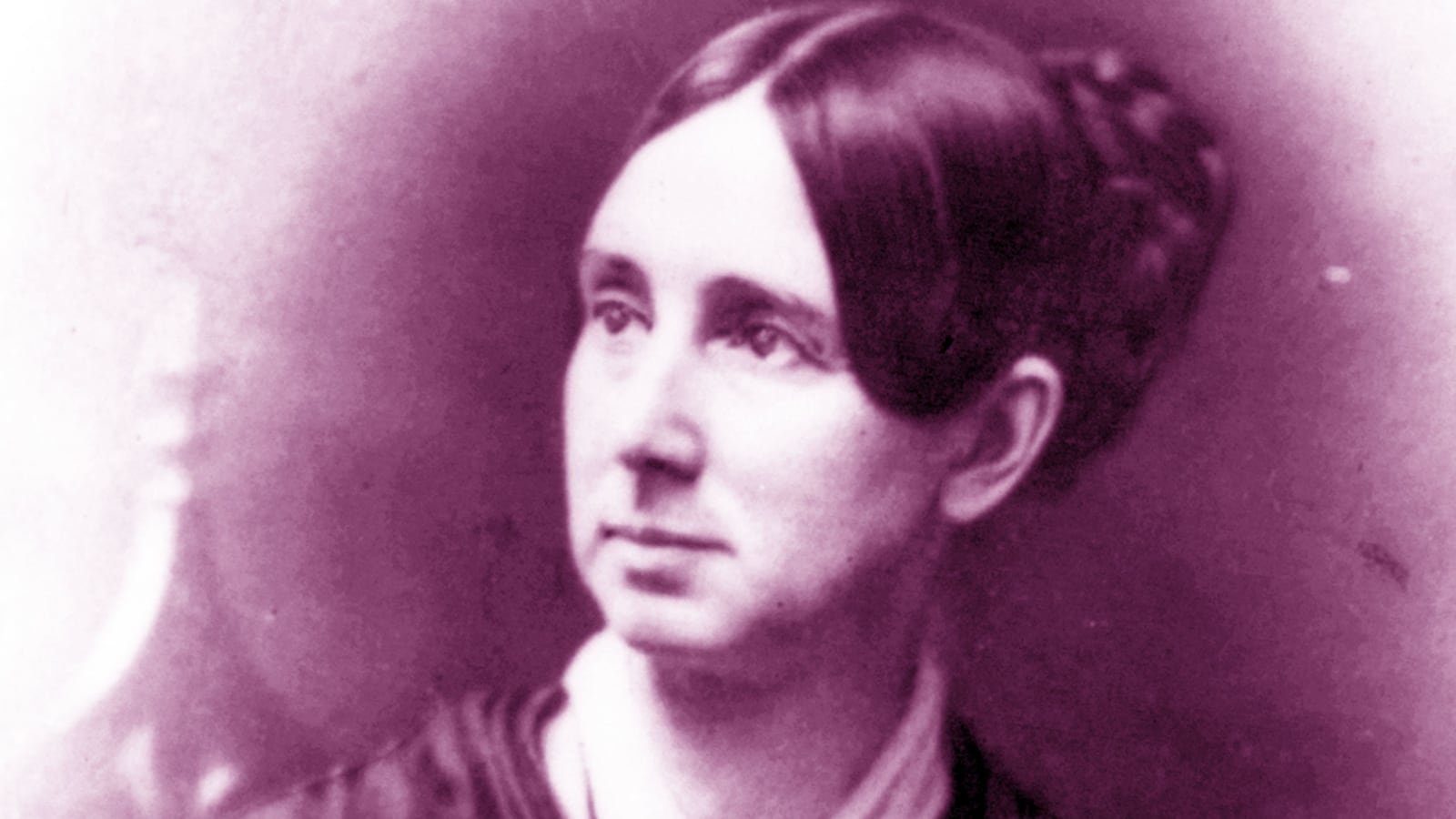Dorothea Dix, the great-grandmother of American national health care, was an unlikely reformer. This campaigner for mental health suffered from mental illness herself; this battler for benevolence was so belligerent she earned the nickname “Dragon Dix.” Loving humanity, not humans, she admitted “I have no particular love for my species, but own to an exhaustless fund of compassion.”
This seemingly small-hearted missionary for bigheartedness infuriated countless colleagues and subordinates while stirring sympathy for the suffering. She established dozens of health care institutions, trained thousands of nurses, and enjoyed a tender heartbreaking relationship with an unlikely man—Millard Fillmore.
A tumultuous childhood that began 215 years ago on April 4, 1802, turned Dix into this bundle of contradictions. Dorothea fled an alcoholic father and depressive mother to live with her wealthy, generous grandmother in Boston when she was 12. Apparently, her parents’ misery and her grandmother’s magnanimity rubbed off on her.
Hemmed into teaching, like so many smart, ambitious women at the time, Dix opened an elementary school in the family mansion in 1821. Four years later, Dix published a common sense primer for teachers. Conversations on Common Things was reprinted sixty times in the next forty years. Despite these successes, she closed her school in 1836, then spent more than a year in England convalescing from “fatigue,” often code word for depression. While in London, she met social crusaders, including the prison reformer Elizabeth Fry, demonstrating the mutual exchange among the Atlantic Basin aristocracy at the time.
Before fixing problems, one must notice them. Dorothea Dix’s transformational encounter occurred in 1841 while teaching Sunday School in the East Cambridge House of Corrections. She found her calling in the prison’s dirt, violence, and cruelty. In 1843, after inspecting jails and almshouses throughout Massachusetts, she published a detailed expose, focusing on the systematic abuse of the insane.
Understanding in her “Memorial to the Legislature of Massachusetts,” that she had to apologize for “surrendering ... my habitual views of what is womanly and becoming,” warning she would depict ugliness “from which my woman’s nature shrinks,” she explained that nevertheless “truth” compelled her. Uttering what become her motto, she proclaimed: “I tell what I have seen.”
Begging the legislators to “hasten to the relief of the victims of legalized barbarity,” she offered a searing prose poem of the great nineteenth-century, upper-crust female reformer. “I come to present the strong claims of suffering humanity,” she wrote. “I come to place before the Legislature of Massachusetts the condition of the miserable, the desolate, the outcast. I come as the advocate of helpless, forgotten, insane and idiotic men and women; of beings, sunk to a condition from which the most unconcerned would start with real horror; of beings wretched in our Prisons, and more wretched in our Alms-Houses. And I cannot suppose it needful to employ earnest persuasion, or stubborn argument, in order to arrest and fix attention upon a subject, only the more strongly pressing in its claims, because it is revolting and disgusting in its details.”
Back then, Dix had to crusade state by state, touring, inspecting, then lobbying successive state legislatures. Two years later, Dix had “her first-born child,” Trenton State Hospital, the first of 32 state institutions and one federal institution she would establish. She also inspired the proliferation of mental hospitals from 13 to 123 in her lifetime. In 1848, she went national, lobbying for a federal land grant to help build more humane insane asylums.
While visiting Washington, she met the Vice President Millard Fillmore, months before he suddenly became president in 1850. It was like so many DC relationships, part business, part pleasure. Unlike many such relationships, it appears to have remained within proper bounds—although it did get messy. Fillmore’s wife Abby died in 1853. His remarriage in 1858 shifted the tectonic plates of their friendship: Charles M. Snyder, who published 150 of their letters, says Dix’s tone changed, hiding from her apparent disappointment by sticking to business.
One typical exchange, if rendered less stiffly, could sound like two friends grumbling about media and politics today. On September 24, 1858, Dix observed: “it is consoling amidst the much that is evil and vicious to know that goodness is wider spread, and more certainly anchored than evil in our land. Bad deeds are widely printed, while small note is made of daily and incidental well-doing. Therefore the former comes to be magnified as dominant.”
Fillmore responded flirtatiously: “I wish I could see your genial face, and catch your quiet smile.” Covering his fears about the looming Civil War, he wrote: “I am looking on calmly, hoping for the best and bracing my nerves for the worst.” Bemoaning “the tendency to lawless anarchy among the people” he nevertheless trusted “the conservative power of the better portion of community to correct these evils, and save the last Republic from becoming a stench in the nostrils of nations.”
Although some scholars label her “the Forgotten Samaritan,” Dix was well-known enough—and important enough—to help launch nursing as a profession during the Civil War, training over 2000 nurses. Her appointment as Superintendent of Army nurses—despite lacking any nursing training—made her “the first woman to serve in a federal-level executive position,” the New York Times recently noted. In one of many nods to sexism, she helped make the new profession respectable for women by seeking nurses who, the journalist Mary Livermore wrote, were “plain almost to repulsion in dress, and devoid of personal attractions.”
Alas, in government, working as insider not outsider, Dix’s gender alienated sexist men, while her bulldog personality and dictatorial ways alienated others. A 30-year-old nurse, Louisa May Alcott, before becoming famous writing about Little Women, would recall being wary of this great woman, writing: “no one likes her and I don’t wonder.” “Dragon Dix” only lasted two years as Superintendent—failing to achieve American immortality with the two angelic nurses of the time, Clara Barton and Florence Nightingale.
By 1867, Dix was busy expanding her crusade for the insane to Europe. She continued being a full time do-gooder, until dying at the age of 85, on July 17, 1887.
If today, in the twenty-first century, Americans are starting to consider free national health care as a basic right, it’s only because in the twentieth century Americans started considering every individual’s welfare a governmental responsibility. That assumption first required a nineteenth-century compassionate revolution, wherein Americans started taking on fellow citizens’ suffering as a communal concern—and feeling the national responsibility for everyone’s health that Dorothea Dix nurtured.
Clearly, not all crusaders for compassion are compassionate themselves. Still, it’s hard not to admire someone who could turn the misery she saw into such conscience-prodding, empathy-inducing, solutions-oriented proverbs, proclaiming: “If I am cold, they are cold; if I am weary, that are distressed; if I am alone, they are abandoned.”






